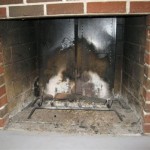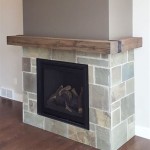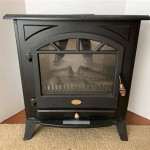Artificial Stone Fireplaces: Aesthetics, Benefits, and Considerations
Artificial stone fireplaces represent a growing trend in interior design, offering a compelling alternative to traditional natural stone installations. These fireplaces utilize manufactured stone veneers or cast stone products, designed to mimic the appearance of natural stone while providing distinct advantages in terms of cost, weight, and installation complexity. Understanding the characteristics of artificial stone fireplaces is crucial for homeowners and designers seeking a balance between aesthetics and practicality.
The appeal of artificial stone fireplaces stems from their ability to replicate the textures, colors, and patterns found in natural stone formations. Manufacturers employ sophisticated molding and coloring techniques to create a diverse range of stone appearances, including stacked stone, fieldstone, ledgestone, and river rock. This versatility allows for seamless integration into a variety of architectural styles, from rustic and traditional to contemporary and minimalist designs.
Beyond aesthetics, artificial stone fireplaces offer tangible benefits related to installation and maintenance. The lightweight nature of artificial stone reduces the structural demands on the surrounding framework, simplifying the installation process and potentially lowering construction costs. The uniform size and shape of individual stone pieces further contribute to ease of installation, minimizing the need for extensive cutting and shaping. Moreover, artificial stone is typically more resistant to staining and fading than natural stone, resulting in lower maintenance requirements over the lifespan of the fireplace.
The decision to incorporate an artificial stone fireplace involves careful consideration of various factors, including the desired aesthetic, budget constraints, structural limitations, and long-term maintenance expectations. This comprehensive guide will delve into the advantages of artificial stone, its different types, installation guidelines, and maintenance procedures, providing a thorough understanding of this increasingly popular fireplace option.
Cost-Effectiveness and Budget Considerations
One of the primary drivers behind the increasing popularity of artificial stone fireplaces is their cost-effectiveness compared to natural stone. The cost of natural stone can vary significantly depending on the type of stone, its availability, and the complexity of its quarrying and transportation. In contrast, artificial stone is manufactured in controlled environments, resulting in more predictable and often lower production costs. This translates into lower prices for homeowners, making the aesthetic appeal of stone fireplaces accessible to a broader range of budgets.
Furthermore, the installation costs associated with artificial stone fireplaces are generally lower than those associated with natural stone. The lighter weight and uniform dimensions of artificial stone simplify the installation process, reducing the labor time and skill required. Natural stone often requires specialized cutting and shaping tools, as well as experienced stone masons, increasing the overall installation expense. The modular nature of many artificial stone veneer systems allows for faster and more efficient installation, further contributing to cost savings.
The long-term cost benefits of artificial stone extend to maintenance. Natural stone, particularly porous varieties, can be susceptible to staining and damage from moisture. Regular cleaning and sealing are often necessary to maintain its appearance and prevent deterioration. Artificial stone, on the other hand, is typically more resistant to these issues, requiring minimal maintenance. This reduces the long-term expense associated with cleaning, sealing, and repairing the fireplace.
However, it is important to note that the initial cost of an artificial stone fireplace can vary depending on the quality of the materials and the complexity of the design. Higher-quality artificial stone products, which more closely mimic the appearance of natural stone, may carry a higher price tag. Similarly, intricate designs and custom installations can increase the overall cost. Therefore, it is crucial to obtain multiple quotes from reputable suppliers and installers to ensure a competitive price and a realistic budget.
Installation Process and Structural Considerations
The installation of an artificial stone fireplace typically involves a multi-step process that requires careful planning and execution. The first step is to prepare the wall or surface on which the stone veneer will be applied. This may involve installing a moisture barrier to protect the underlying structure from water damage. A layer of metal lath or wire mesh is then attached to the wall to provide a secure bonding surface for the mortar.
Next, a scratch coat of mortar is applied to the lath, creating a rough surface that will further enhance the adhesion of the stone veneer. The scratch coat is allowed to dry thoroughly before the stone veneer is applied. The individual stone pieces are then carefully positioned and adhered to the scratch coat using a specialized mortar designed for stone veneer applications. It is crucial to use the correct type of mortar and follow the manufacturer's instructions to ensure a strong and durable bond.
The installation process also involves paying close attention to the spacing and alignment of the stone pieces. The goal is to create a natural and aesthetically pleasing appearance, mimicking the variations in color and texture found in natural stone formations. Some artificial stone products feature interlocking designs that simplify the installation process and ensure consistent spacing. However, even with interlocking designs, careful attention to detail is essential to achieve a professional-looking result.
Structural considerations are paramount when installing an artificial stone fireplace. While artificial stone is lighter than natural stone, it still adds weight to the structure. It is important to ensure that the wall or surface on which the stone veneer will be applied is capable of supporting the additional weight. In some cases, it may be necessary to reinforce the structure to prevent sagging or other structural problems. Consulting with a structural engineer is advisable, especially for large or complex installations.
Furthermore, it is important to consider the fire safety aspects of the installation. The fireplace opening must be properly sized and constructed to prevent the escape of sparks and embers. Non-combustible materials must be used around the fireplace opening to protect the surrounding walls and flooring. Local building codes and regulations should be consulted to ensure compliance with all applicable fire safety requirements.
Design Versatility and Aesthetic Options
The design versatility of artificial stone fireplaces allows for a wide range of aesthetic options, catering to diverse tastes and architectural styles. Manufacturers offer artificial stone veneers in a vast array of colors, textures, and patterns, replicating the appearance of various natural stone formations. This allows homeowners and designers to create a fireplace that seamlessly complements the overall interior design of the space.
One popular aesthetic option is stacked stone, which features long, narrow pieces of stone arranged in horizontal rows. Stacked stone fireplaces offer a clean and modern look, often used in contemporary and minimalist designs. Another common option is fieldstone, which consists of irregularly shaped stones of varying sizes and colors. Fieldstone fireplaces evoke a rustic and natural feel, often used in traditional and country-style homes.
Ledgestone fireplaces feature thin, flat pieces of stone arranged in overlapping layers. Ledgestone offers a textured and visually interesting surface, suitable for both traditional and modern designs. River rock fireplaces incorporate smooth, rounded stones, creating a unique and organic look. River rock is often used in homes with a natural or coastal theme.
Beyond the type of stone, the color and finish of the artificial stone can also be customized to achieve the desired aesthetic. Artificial stone veneers are available in a wide range of colors, from light neutrals to dark earth tones. The finish of the stone can also be adjusted, from smooth and polished to rough and textured. This allows for precise control over the overall look and feel of the fireplace.
The design versatility of artificial stone extends beyond the fireplace surround itself. Artificial stone can also be used to create mantels, hearths, and other decorative elements. This allows for a cohesive and integrated design that seamlessly blends the fireplace with the surrounding space. The ability to customize the design of an artificial stone fireplace makes it a versatile and adaptable option for any home.

Faux Stone Fireplace Entertainment Center Genstone

Stone Fireplace Design And Remodel

Faux Stone Electric Fireplace Rustic Ginny S

ᑕ❶ᑐ Faux Stone Electric Fireplace Where Does It Match Best

43 Top Fireplace Interior Design Stacked Stone Fireplaces Faux Veneer

Faux Stone For Fireplaces

Stone Fireplace Makeover Part 2 Faux Whitewash Organized Ish

Stone Fireplace Design And Remodel

Use A Faux Stone Fireplace For Your Log Home To Reduce Costs

Allen Roth 65 In W Grey Faux Stacked Stone Infrared Quartz Electric Fireplace The Fireplaces Department At Com
Related Posts








